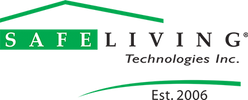EMF Hazards
Electromagnetic Field (EMF) Hazards and Government Regulation
Across the globe, the potential health hazards posed by electromagnetic fields (EMFs) are a topic of increasing concern. EMFs are produced by a wide range of devices and infrastructure in modern society, and their possible impacts on human health have led to the development of regulations intended to limit exposure. While many countries, including the United States, have set exposure guidelines for various EMF sources, the rapid evolution of technology makes it critical for governments to continually review and expand these protections.
![]()
 Government-Regulated EMF Hazards
Government-Regulated EMF Hazards
- Electronic Devices
- Electronic devices that emit either ionizing or non-ionizing radiation fall under the regulatory scope of the U.S. Food and Drug Administration (FDA). This includes everyday items like microwave ovens, as well as medical imaging equipment. The FDA sets and enforces safety standards to protect users from excessive exposure.
- Cell Phones
- Cell phones and the towers that support their function emit radio frequency radiation. In the United States, the Federal Communications Commission (FCC) regulates exposure levels for this type of radiation. FCC guidelines are based on standards developed by expert bodies like the Institute of Electrical and Electronics Engineers (IEEE) and the National Council on Radiation Protection and Measurements (NCRP). These guidelines also receive input from other federal health and safety agencies.
- Smart Meters
- Smart meters, which use wireless transmission to report utility usage, are another source of EMF exposure. The FCC has established limits on the radiation these devices can emit. Though small and often overlooked, smart meters are becoming increasingly common in both residential and commercial properties.
- Power Lines
- Unlike other EMF sources, there are currently no federal exposure limits for EMF radiation from power lines in either residential or occupational settings. This lack of federal regulation has sparked ongoing debate, especially as large high-voltage lines are constructed near homes and schools.
- Medical Use
- Many medical procedures and devices rely on ionizing radiation, which can pose significant health risks if not properly controlled. Common tools like X-rays, CT scans, and radiation therapy machines fall under this category. Multiple agencies share responsibility for ensuring safety in medical settings, including the Centers for Disease Control and Prevention (CDC), the FDA, the Environmental Protection Agency (EPA), and the Nuclear Regulatory Commission (NRC).
- Nuclear Power
- Nuclear power facilities produce ionizing radiation as part of their operations. Their safety is overseen by a coordinated group of agencies including the EPA, Federal Emergency Management Agency (FEMA), and the NRC. These agencies manage both daily operations and emergency response planning.
- Imported Products
- The U.S. Customs and Border Protection (CBP) plays a role in EMF safety by screening imported goods to ensure they comply with national health and safety regulations, including those related to radiation.
- Workplace Exposure
- Occupational exposure to EMFs is monitored and regulated through workplace safety legislation. In the U.S., this is enforced by agencies like the Occupational Safety and Health Administration (OSHA), while countries like Canada rely on bodies such as the Health and Safety Authority (HSA).
- Radon
- Radon, a naturally occurring radioactive gas, is a major contributor to lung cancer risk. The EPA recommends mitigation for indoor levels above 4 picocuries per liter (pCi/L), while Health Canada recommends action if levels exceed 200 becquerels per cubic meter (Bq/m³).
Shop All EMF Meters
Shop our wide selection of Safe and Sound EMF meters and RF Meters and stay aware of your EMF exposure.


